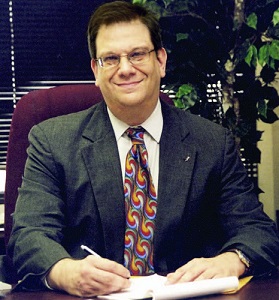September 2016, Vol. 243, No. 9
Editor's Notebook
Editor's Notebook: Transporting Renewable Natural Gas Could Be in Pipelines' Future

Renewables and natural gas: Can it get any better than this? For President Obama, who has professed appreciation for both, this would have to be a win-win situation.
As I write this column, folks are preparing to complete a unique energy experiment near St. Louis, MO. They plan to produce what they say will be the first Renewable Natural Gas (RNG) from the largest livestock manure-to-energy project of its kind. What really makes this worthwhile is that they will be able to deliver the RNG into the national pipeline grid.
I haven’t asked NACE, INGAA, GTI or PRCI what the physical ramifications of such material could be to pipelines, but knowing how well-constructed todayís pipelines are, Iíd bet any problems would be miniscule. Pipelines have had their fill of troublesome and unwanted ingredients, so this product of nature shouldn’t be too difficult to absorb.
The event was to be last month by Roeslein Alternative Energy and Smithfield Hog Production at a company-owned farm in northern Missouri. I was invited to attend, but didnít know how to tell Janet that it would mean foregoing our wedding anniversary. So, I didn’t go.
But this is serious stuff with some real bucks tied to it. They say $120 million is being spent on this initiative designed to reduce greenhouse gas emissions, produce RNG, eliminate rainfall effects of treatment systems and generate jobs for the surrounding community.
The first phase of the project was to install impermeable synthetic covers on 41 of the 88 existing manure lagoons at nine Smithfield farms in northern Missouri, capturing methane from one of the largest concentrations of ìfinishing hogsî in the Midwest. They say the covers turn the lagoons into anaerobic digesters where, as an interim step, the resulting biogas has been flared.
The second phase involved installing equipment to remove impurities from the biogas to create pipeline-quality RNG. By July 1, RNG from the anaerobic digestion of hog manure had been injected into the natural gas pipeline grid, utilizing an interconnect that was installed at Ruckman Farm where theyíll begin RNG injection into ANR pipeline. Duke Energy has agreed to purchase a portion of the RNG to help meet clean energy requirements for power generation.
By 2019, theyíll have finished installing the covers at all of the remaining farms as well as construction facilities for biogas cleaning and RNG production. Ultimately, the hog manure from the project will produce 2.2 Bcf of pipeline-quality RNG, or the equivalent of 17 million gallons of diesel fuel annually. Part of the effort will also be to supplement the hog manure feedstock with biomass harvested from restored prairie grasslands to produce additional RNG.
When completed, those 88 impermeable covers will prevent 400 million gallons of rainfall water from entering lagoons. This water safely returns to the groundwater supply and does not require costly treatment.
About 850,000 tons of CO2-equivalent methane will be prevented from reaching the atmosphere. The project reduces or removes greenhouse gases as defined in the California Carbon Offset credits program. For the curious, odor related to hog manure, which previously was retained in open lagoons, is reduced.
Roeslein Alternative Energy began in 2012, the brainchild of Rudi Roeslein who is co-founder and CEO of St. Louis-based Roeslein and Associates, Inc., a global company involved in engineering, modular fabrication and construction of industrial plants.
RAEís stated goal is to convert agricultural and industrial wastes, along with renewable biomass feedstocks, into renewable natural gas and sustainable co-products. Roeslein, 68, also owns three farms dedicated to teaching best practices for land stewardship and conservation, in this case, saving prairie land and wildlife. He is passionate about his cause, demonstrating how science and technology can combine with protection of the environment while also providing steady income for landowners.
Roeslein reminds me of another energy pioneer, the late George Mitchell, widely regarded as the father of the fracking process that has led to the shale revolution. What they really have in common is this: Roeslein came to America in 1956 from communist Austria; Mitchell, of whom it was said ìfew people have done as much to change the world,î was born to Greek immigrants.
America works because it is a hodgepodge of people and cultures to whom it offers that rare opportunity to create greatness. In these cases, making your dreams come true to benefit the world, no matter where you come from.





Comments